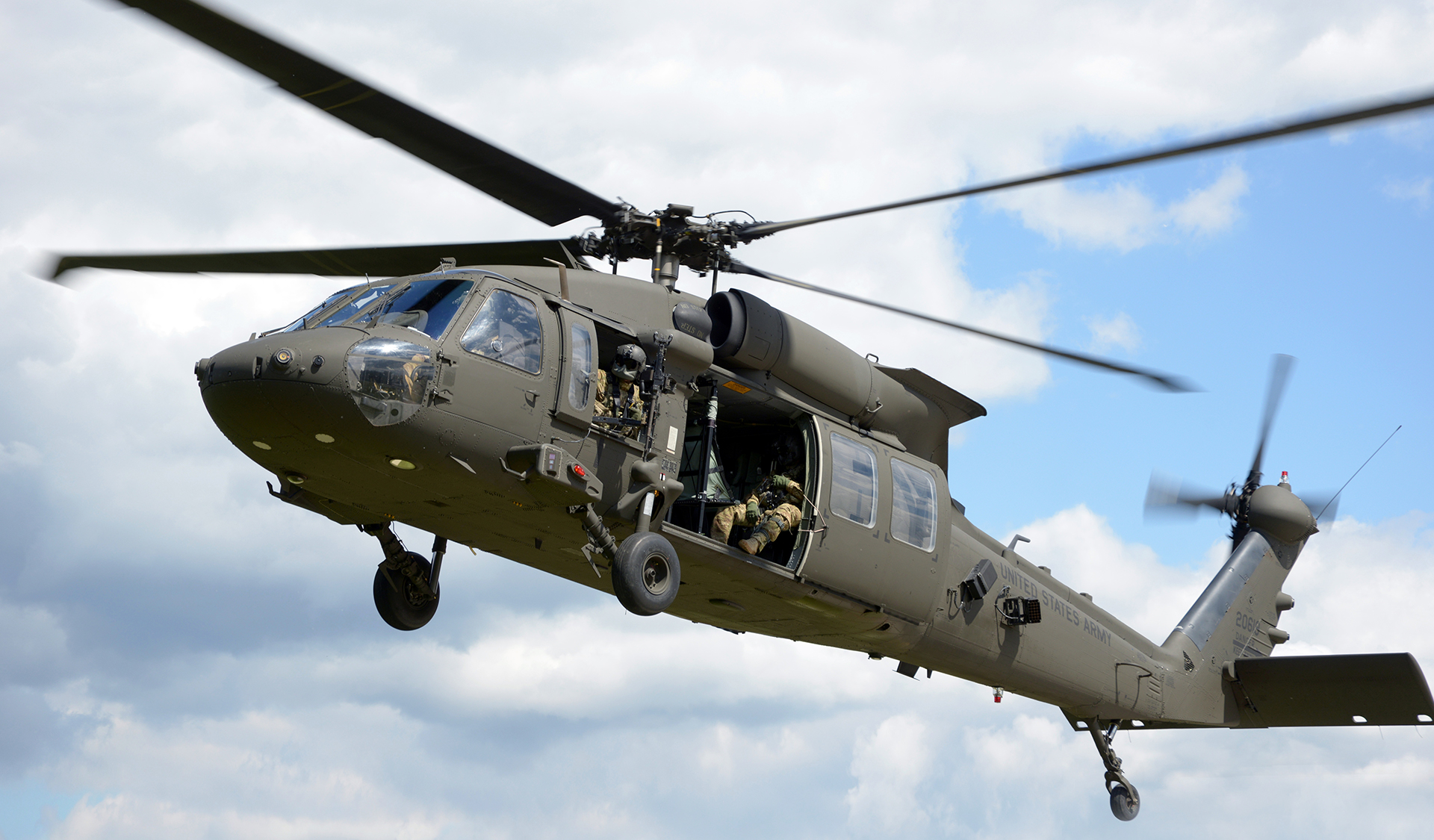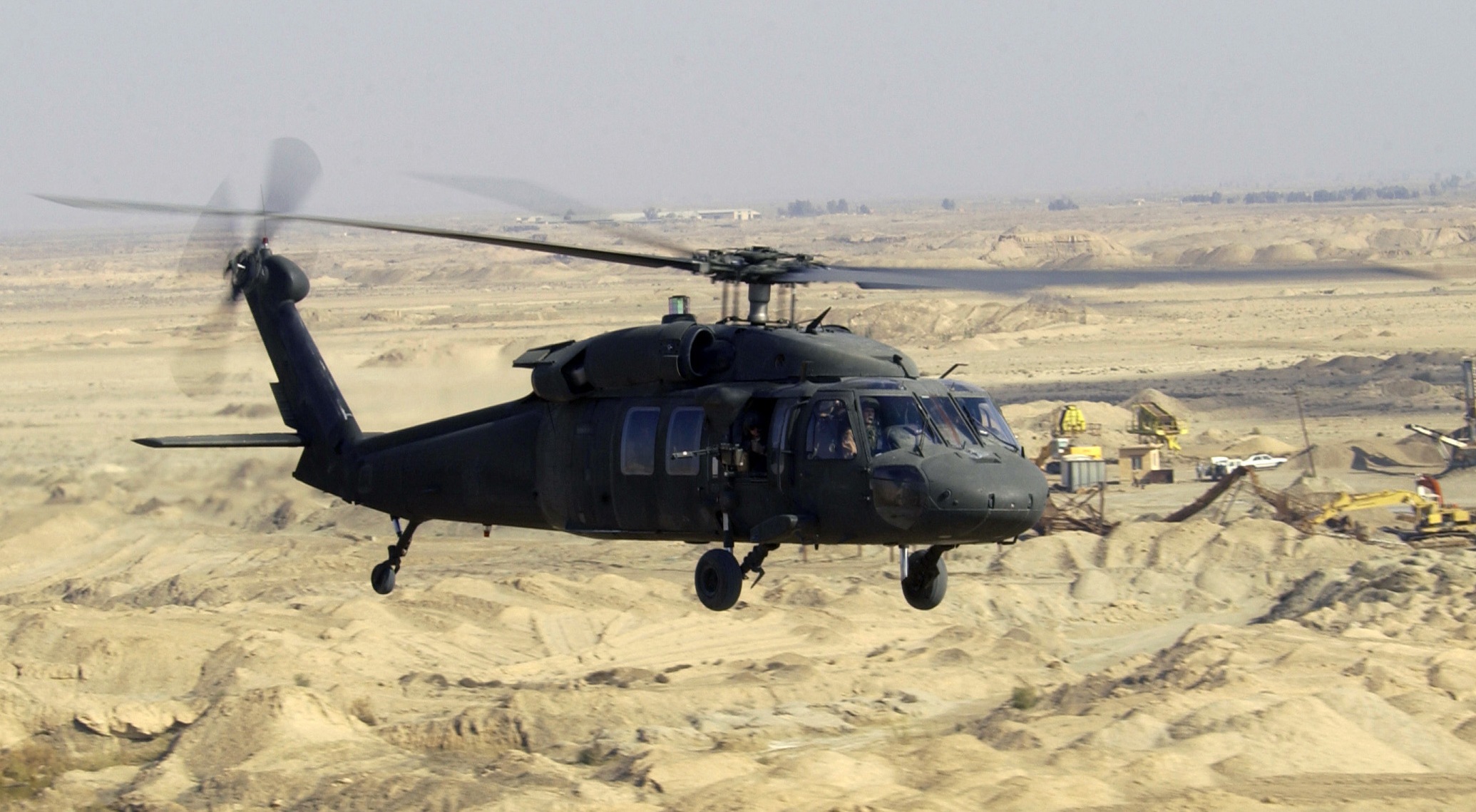Why the UH 60 Stays a Favorite Option Amongst Armed Forces Worldwide
Why the UH 60 Stays a Favorite Option Amongst Armed Forces Worldwide
Blog Article
UH-60: Technologies in Modern Helicopter Layout
The UH-60 helicopter stands as a benchmark in contemporary aeronautics, showcasing considerable improvements in design and innovation that provide to the developing needs of army operations. As we check out the advancement and key advancements of the UH-60, it comes to be important to think about exactly how these advancements affect not just current applications however likewise the future landscape of helicopter layout.

Advancement of the UH-60
The development of the UH-60 Black Hawk helicopter stands for a considerable milestone in aerospace design and armed forces aviation. Presented in the late 1970s, the UH-60 was created by Sikorsky Aircraft to satisfy the USA Army's need for a functional utility helicopter efficient in executing a range of missions. Its style emphasized speed, toughness, and maneuverability, establishing brand-new requirements for functional performance.
The UH-60 includes a distinctive four-blade rotor system, which boosts lift and stability, enabling it to run efficiently in varied environments. Its airframe is built from advanced composite materials, adding to a reduction in weight while preserving architectural stability. The helicopter's layout also integrates better aerodynamics, which improves gas performance and increases range.
For many years, the Black Hawk has gone through numerous upgrades to enhance its capabilities, consisting of boosted engines, progressed flight control systems, and modular systems for easy maintenance and versatility. The helicopter's capacity to perform objectives varying from army transportation to clinical evacuation has solidified its function as a foundation of U.S. army operations. The UH-60 Black Hawk continues to be a prime instance of exactly how advancement in helicopter layout can significantly affect armed forces efficiency and functional versatility.
Advanced Avionics Equipments
Innovations in avionics systems have actually changed the capacities of modern-day helicopters like the UH-60 Black Hawk, boosting functional performance and situational recognition (UH 60). The assimilation of sophisticated avionics enables improved navigating, trip, and interaction administration, making the UH-60 a lot more flexible in diverse mission accounts
Among the crucial functions is the sophisticated digital cockpit, which uses multifunction screens that supply real-time data, guaranteeing pilots have prompt accessibility to essential flight information. This streamlining of details lessens pilot workload and enhances decision-making procedures during complex procedures. Furthermore, the consolidation of GPS and inertial navigating systems allows accurate positioning and course preparation, improving goal implementation in tough environments.
Moreover, progressed avionics systems improve communication capacities with secure information links and voice interaction systems, allowing smooth sychronisation with ground forces and various other aircraft. The assimilation of automatic trip control systems even more adds to enhanced security and control, particularly in damaging climate condition or throughout low-altitude maneuvers.
Engine and Efficiency Enhancements
Engine performance in modern-day helicopters has taken a substantial leap onward, driven by developments that enhance dependability, performance, and power. At the forefront of these improvements is the fostering of even more powerful turboshaft engines, particularly those using innovative products and technologies that allow greater temperature level tolerances and enhanced thrust capacities. The UH-60 Black Hawk, for example, utilizes the T700-GE-701C engine, which features a dual-channel, full-authority electronic engine control system. This system improves efficiency while maximizing fuel useful site usage and minimizing upkeep requirements.
In addition, the integration of engine health and wellness surveillance systems enables real-time diagnostics and anticipating upkeep, substantially boosting functional dependability. These systems not only alert staffs to possible concerns prior to they end up being important however likewise facilitate much more efficient upkeep organizing, consequently decreasing downtime.

Materials and Structural Innovations
Recent advancements in products and architectural layout have actually revolutionized modern helicopter building, improving both efficiency and longevity. The intro of innovative composite products, such as carbon fiber enhanced polymers, has actually significantly minimized weight while maintaining structural integrity. This shift not only improves gas effectiveness yet likewise boosts haul capability, enabling helicopters like the UH-60 to carry out more diverse goals.
Additionally, developments in aluminum alloys and titanium components have actually contributed to enhanced resistance to deterioration and tiredness, prolonging the lifespan of essential airframe aspects. The tactical use of these products has caused a decrease in upkeep needs and enhanced overall functional readiness.

Moreover, the assimilation of computer-aided design (CAD) and additive production modern technologies has actually allowed extra complicated geometries and light-weight structures, maximizing the aerodynamic efficiency of helicopter layouts. These developments promote rapid prototyping and manufacturing, allowing makers to react swiftly to progressing goal needs.
Security and Survivability Attributes
Safety and survivability functions in modern-day helicopter design have actually come to be critical, showing the raising demands for mission efficiency in tough settings. The UH-60 Black Hawk, a noteworthy example, incorporates innovative modern technologies to enhance team and traveler security. Among one of the most critical developments is the consolidation of crashworthy gas systems created to decrease the threat of fire during impact. Additionally, the airframe is constructed with strengthened materials that take in and dissipate power, additional securing passengers in case of a collision.
The helicopter likewise employs a ballistic protection system, that includes armored staff seats and crucial systems protecting, decreasing vulnerability to small arms fire and shrapnel. his response Enhanced situational recognition is attained with advanced avionics and sensing unit modern technologies, enabling pilots to discover and avoid hazards properly.
Additionally, the integration of redundancy in critical systems-- such as twin engines and several flight control networks-- makes sure continued procedure even if one system falls short. The UH-60 is furnished with advanced emergency situation flotation devices, improving survivability in water landings. Jointly, these functions not just improve the safety and security of personnel yet also raise objective success prices in hostile settings, demonstrating the dedication to excellence in helicopter layout.
Conclusion
The UH-60 helicopter stands for a considerable advancement in contemporary aeronautics innovation, including innovative products, cutting-edge avionics, and durable safety and security features. Its advancement mirrors a commitment to improving efficiency and operational effectiveness while making certain pilot and team survivability. The assimilation of light-weight composites and advanced navigating systems underscores the helicopter's adaptability in different military goals. In general, the UH-60 acts as a standard for future developments in helicopter style, symbolizing strength and versatility in contemporary armed forces procedures.
The UH-60 helicopter stands as a benchmark in modern aviation, showcasing significant developments in design and technology that cater to the evolving needs of army procedures. As we check out the evolution and key innovations of the UH-60, it becomes essential to consider just how these growths affect not only current applications yet additionally the future landscape of helicopter layout.
Introduced in the late 1970s, the UH-60 was designed by Sikorsky Airplane to fulfill the United States Military's need for a versatile energy helicopter capable of carrying out a variety of goals. The UH-60 Black Hawk stays a prime example of how advancement in helicopter style can considerably impact army my response efficiency and operational adaptability.
Generally, the UH-60 serves as a standard for future advancements in helicopter design, personifying durability and flexibility in modern armed forces procedures.
Report this page